Review: Nikon Z6 is a great all-around full-frame mirrorless camera
The new full-frame mirrorless Nikon Z6 is a more affordable model of the outstanding Z7, keeping nearly all features while cutting the price in half.
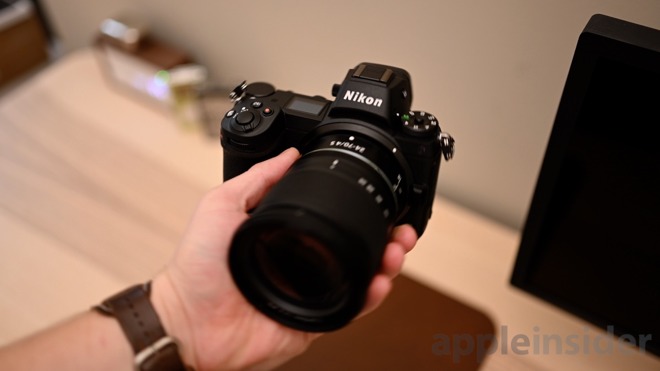
Nikon Z6
We've already reviewed the big brother to the Nikon Z6 -- the Z7 -- which launched a couple months earlier, and were left overall impressed. The biggest setback to the Z7 was the hefty price tag that accompanied it. As amazing as it was, it was clear that most users could go for a more affordable option with a slightly lower megapixel count.
It has a tilt-able LCD touchscreen on the back with a refreshed GUI to make controls easy. Powered by the newest Expeed 6 image signal processor (ISP). Both models also use Nikon's Z-mount system for added versatility.
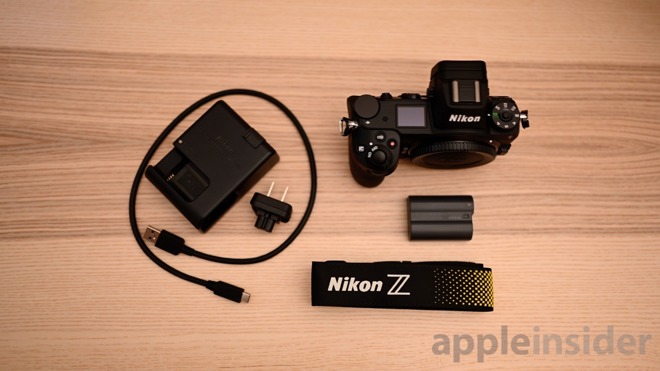
Nikon Z6 camera body, battery, charger, USB-C cable, and strap
Many of these are familiar like the wall charger, athough some are slightly tweaked for the new models. The ENEL15b battery is a slight variation on the common ENEL15 found in many other Nikons. But, this version of the battery can be charged in the camera over USB-C. Other ENEL15 batteries with work in the Z6, they just can't be charged in-camera.
The camera strap is basic, and first on our list to upgrade.
We wish Nikon had opted for a pure USB-C to USB-C cable rather than the less-needed-each-week USB-C to USB-A. Luckily, if you've got any recent Apple gear such a MacBook Pro or iPad Pro, you can use the USB-C cables you've lying around. Skip Apple's charging cable for this though, that only transfers data at USB 2.0 speeds.
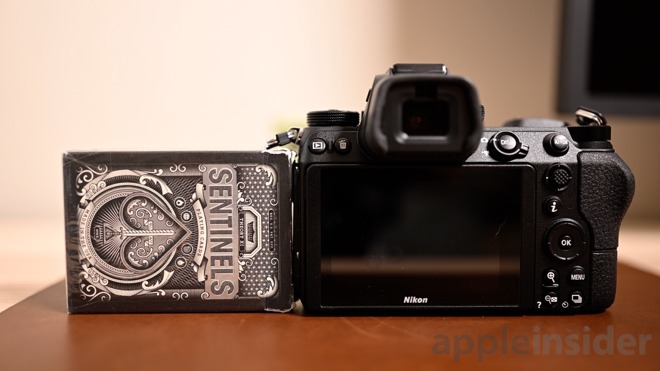
Nikon Z6 against a deck of playing cards
Much importance was put on this and it really shows. The Z6 is comfortable to hold and feels very secure thanks to the large right-sided grip.
The electronic viewfinder (EVF) juts out slightly as well, so when you bring your eye to the viewfinder, your nose doesn't rub against the touchscreen. We wish other cameras would consider this.

Nikon Z6 exposure modes
When snapping a pic, a press of the i brings up the information overlay. Depending on the exposure mode you are in, certain values are adjustable and others aren't. The ones that can be changed are highlighted, can be tapped and swiped through. It is very fast to make changes by just tapping what you're looking for.
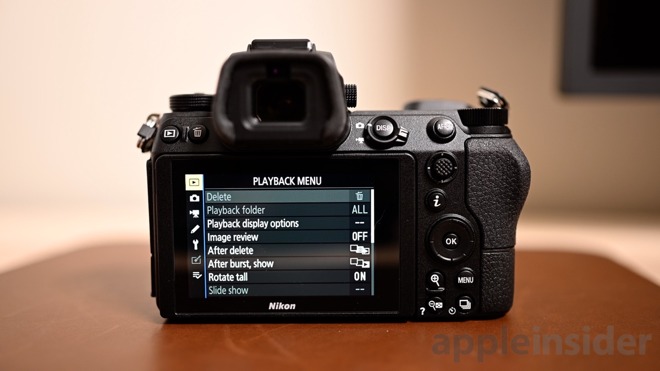
Nikon Z6 menu system and button layout
The button layout is also familiar, with many user-customizable options to make the camera your own. There were times that some controls were difficult to adjust in tandem, such as pressing the right function button and rotating the front adjustment wheel.
One of our favorite features is being able to see and adjust all controls using not only the rear touchscreen but the EVF as well. When switching to the viewfinder, it mirrors what was on the large display.
If you've ever shot in bright sunlight and struggled to check your focus on the display, you will understand the practicability of this feature.
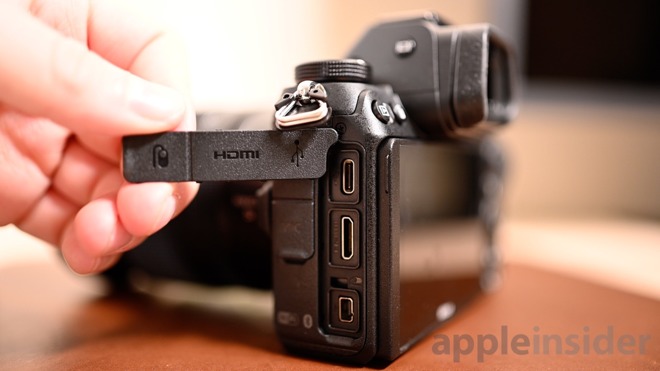
Nikon Z6 ports
The left side of the camera sports an array of ports including a headphone jack, microphone input, HDMI output, USB-C, and a remote shutter port.
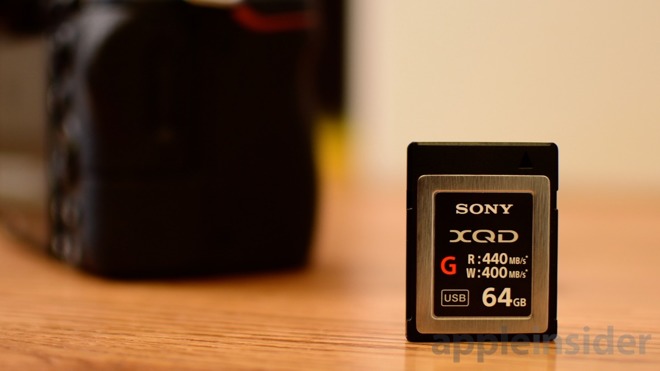
XQD 64GB memory card
XQD is far faster than SD, though the cost of the media is higher, and it is only produced currently by Sony. XQD cards can read at 440 megabytes per second and write at 400 megabytes per second, and this speediness is necessary when RAW images can easily be up to 50MB.
Going forward, after a simple firmware update, the Z6 will support the emerging CFexpress format. Luckily, CFexpress uses the same format as XQD and is poised to be much more popular and powerful. Version 1 of CFexpress will be capable of 1970 MB/s, or more than six times that of SD UHS-II.
Only one card slot is feasible in a body this small. Using only a single card slot may put some pros off, but it isn't a dealbreaker for nearly every other shooter looking at the Nikon.
As the Z6 is aimed largely at prosumers, most will be ok with the tradeoff of faster card speeds and smaller body for a solo slot.
Up to 90-percent of the frame is covered in AF points and uses a hybrid system that switches between focal-plane and phase-detect AF and contrast-detect AF on the fly.
Using smart object tracking, subjects can stay in focus as they move, which works well in slower situations, but gets tripped up the faster and smaller the subject.
Here is a sample shot we got of our dog at 11:30 at night with just some light cast from a street lamp. We also compared it to the same shot we got from our iPhone XS Max. The results look -- almost literally -- like night and day.

Nikon Z6 versus iPhone XS Max at night
This was shot wide open at f/4 with the shutter speed still somewhat long at 1/10 of a second and the ISO set to 25600. It isn't entirely perfect -- you try to get a puppy to sit still for that long -- but did remarkably well such little light and almost no noise in the image. The stabilization provided by the camera also gives you added confidence for these long-shutter shots.
Something that we noted during our Z7 review, that we still love here on the Z6, is the live display. The live display isn't just a video of what the camera sees, but a live preview of what our image will actually look like.
The best example to explain this is when shooting long exposure shots of water. For these tricky shots, you need the shutter open longer, which lets in additional light. That means when in sunlight, the ISO needs to drop all the way down (in the case of the Z6, that's 100). We also tighten up the aperture to around f/14 to limit the amount of light coming in, and adjusted exposure compensation.
Normally, we'd make our best guess, fire off a sample shot, check it out, adjust, then fire again. On the Z6, we actually get an accurate live preview of the image. When we fire the shot, the image looks exactly the same other than the softness of the moving water.
When we try the same shot on an older camera -- like the D500 -- we have two big differences. The first is a significant amount of shutter lag when using Live View.
Secondly, what you see on the display on the D500 does not necessarily represent what the image will look like when actually taken. When we went off the Live View display, we got a very dark photo because the monitor did not take into account how long the shutter stayed open, which plays a huge part in the photograph captured.
We took the Nikon Z6 out on the town for a series of photo sessions, of which were minimally edited out of the camera. There was quite a bit of grey in this dreary fall/winter weather of the northeast.
For readability's sake, we moved more image samples to the tail-end of the review.
Like on your iPhone, the Z6 is capable of capturing 8MP stills while filming in either 4K or 1080P.
Thanks to the built-in intervalometer, up to 9,999 images can be captured for beautiful 4K time lapses, but additional software is needed to pull it all together.
We shot a variety of videos for AppleInsider using the Z6 and we noticed how quiet the AF system is, with the noise of it not getting picked up on our external mic. We also used the Touch Screen to quickly pull focus between subjects without having to touch our lens.
If you use an external recorder like those from Atmos, you can take advantage of 10-bit output, or you can shoot 8-bit 4K footage to both an external recorder and the internal memory card simultaneously.
Stabilization kicks in for video as well, finally allowing users to shoot handheld footage on a Nikon without requiring an external stabilizer -- though it wouldn't hurt.
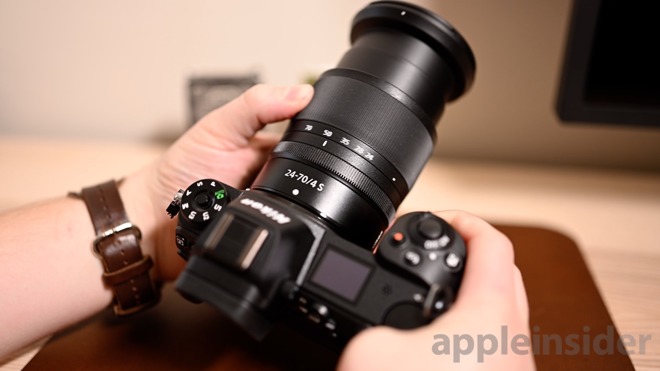
Nikon Z6 24-70mm lens
Z-mount has an increased mount diameter which allows Nikon to create new large-aperture lenses like the upcoming f/0.95 Noct lens launching early 2019.
These new lenses also drop the built-in vibration reduction stabilization feature that was included on previous lenses. With the smaller body, Nikon has included 5-axis in body stabilization. For native Z-mount lenses, they get to take advantage of all 5 axes.
Older lenses, using the FTZ adapter, gain support for a third axis on top of the two contained in VR lenses. The in-body stabilization is solid enough to compensate for five steps of shutter speed.
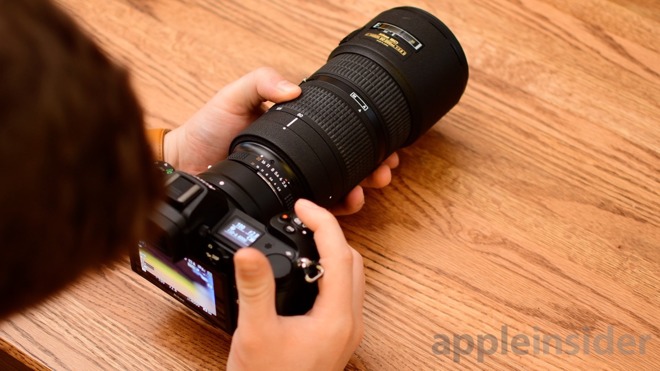
Nikon Z6 FTZ adapter
The aforementioned FTZ adapter is immensely helpful out of the gate, as only a handful of Z-Mount lenses are available. Currently, there is the 24-70mm f/4, 50mm f/1.8, 35mm f/1.8, with six additional lenses slated for 2019. By using the adapter, it brings support for 400 existing F-mount lenses.
We do wish Nikon had gone for maybe a f/1.4 or f/1.2 for at least one of their prime lenses, but they are beautiful pieces of glass regardless. If you are familiar with the previous 35mm f/1.8 F-mount prime lens, you will notice a huge difference in size between the two. The new lens juts out about twice as much, which is unfortunate when you're trying to stay compact.
There are a few tricks baked into the new lenses, such as the ability to use the function buttons to change what the focal ring does. Instead of focusing, the ring could be used to adjust aperture or white balance. On the 24-70mm lens, Nikon has a locking mechanism to prevent the lens from inadvertently extending, and staying more compact when not in use.
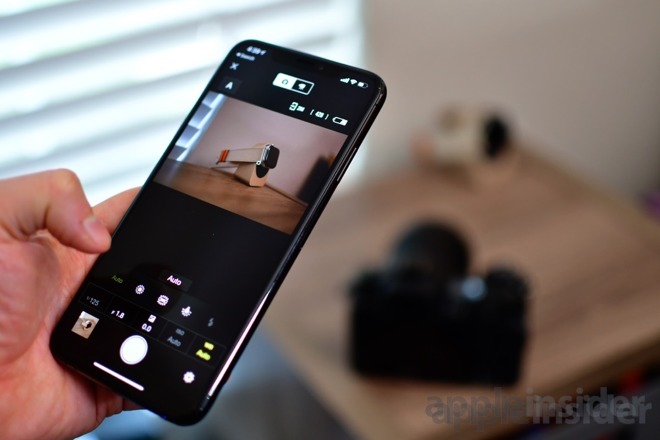
Snapbridge mobile app
SnapBridge -- Nikon's mobile app -- works on both iPads and iPhones for seamless pairing.
Over Bluetooth, the camera can preview images and add geo data to your photos as you shoot. Switching over to Wi-Fi and you have a whole host of other functionality. The Z6 has 2.4 and 5GHz Wi-Fi which is significantly faster than the 2.4GHz found before when transferring images.
You can also shoot remotely using your iPhone or iPad. Once connected, you can easily switch exposure modes from the top left of the app. To the right is a toggle for photo or video mode, followed by additional camera stats such as battery.
Below the live preview image -- that only has a slight delay from the camera -- are all the adjustable settings from white balance, to aperture, to shutter speed. This remote photography control will certainly come in handy, whether you are shooting a family photo with you included, or you are doing long-exposure shots where camera movements can be detrimental.
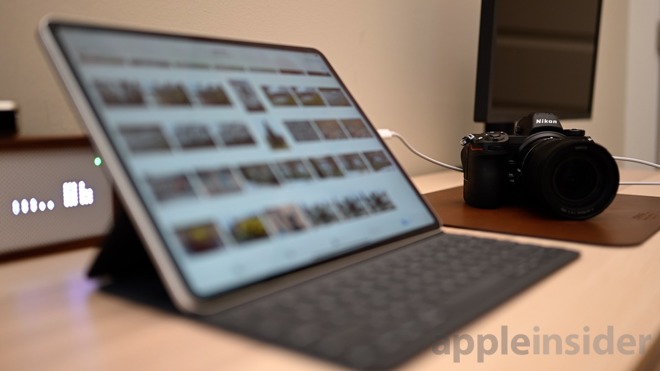
Nikon Z6 and iPad Pro
On the Mac, USB-C support is still wonderful, but as is Nikon's suite of free software including its image transfer utility and ViewNX-i management/editing app.
Z7 has the edge when it comes to resolution, trouncing the 24.5MP of the Z6 with 45.7MP. That added resolution also affords the ability to shoot 8K time-lapses from those monstrous stills.
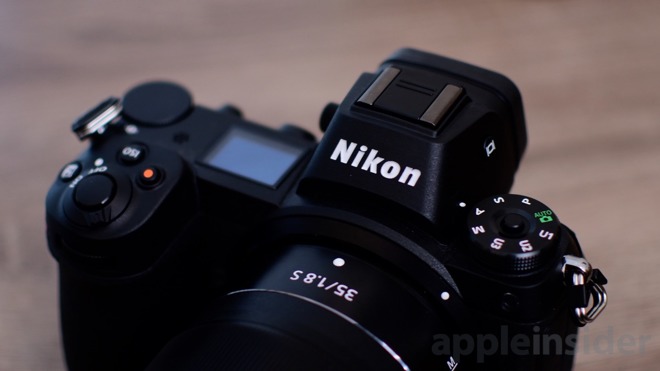
Nikon Z6
Otherwise, the Z6 is superior, at half the cost. It performs better in low light with a 204,800 ISO, higher than the 102,400 of the Z7. You will have some artifacts in the image at that value, but it does perform better.
Z6 also has the edge with speed, capable of getting off 12 RAW shots a second against the Z7's 9.
Each camera has their own strengths, making it a bit of a tough call for users who have no allegiance to either brand.
The A7III is a very popular full-frame mirrorless shooter. It packs dual media slots, is slightly slimmer, and has a longer battery life when compared against the Z6. All these can be vital for impassioned photogs. There are also 693 focus points in the A7III which could make a difference when trying to focus on that great shot.
Conversely, the Z6 packs a few tricks of its own. The rear display has a substantially higher resolution, there is a secondary top display for additional info, and it is significantly quicker when shooting. Nikon's display has 2,100,000 pixels whereas Sony only packs in 921,600. The Z6 can power through 12 RAW photos in a second, easily topping the 9 max from the A7III. For those looking for format variety, the Z6 can also output in NEF and TIFF as well as RAW and JPG (with on-camera RAW processing to boot). Lastly, for the Z6, it can shoot time lapses natively.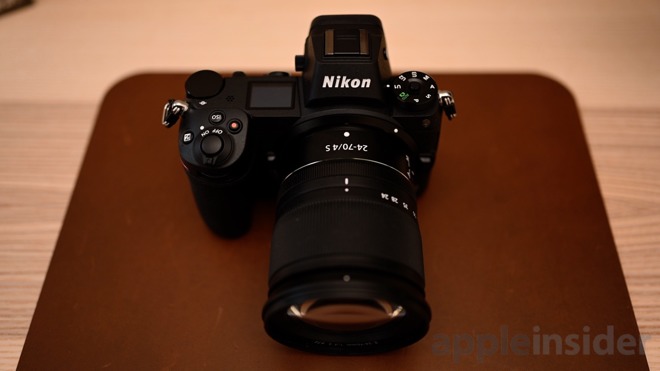
Nikon Z6
In a similar vein as to how Apple packed almost everything that makes the iPhone XS great into the cheaper iPhone XR, Nikon kept the Z6 an all-around great camera for half the price. If you are looking for speed or low light perks, the Z6 actually bests the Z7, while still costing less.
Compared to other cameras in the same price range Nikon does come up short with battery life and media card slots, but these weaknesses can be overcome.
Those looking for an FTZ Mount Adapter can also take advantage of $100 in cash savings on the kit with free next day delivery.

Nikon Z6
We've already reviewed the big brother to the Nikon Z6 -- the Z7 -- which launched a couple months earlier, and were left overall impressed. The biggest setback to the Z7 was the hefty price tag that accompanied it. As amazing as it was, it was clear that most users could go for a more affordable option with a slightly lower megapixel count.
The basics
Getting the commonalities out of the way first, the Nikon Z6 is a 24.5MP full frame mirrorless shooter. It sports an ISO range of 100 - 51,200 in steps of 1/3 or 1/2 EV. Maxed out, it can get up to an ISO 204,800 equivalent.It has a tilt-able LCD touchscreen on the back with a refreshed GUI to make controls easy. Powered by the newest Expeed 6 image signal processor (ISP). Both models also use Nikon's Z-mount system for added versatility.
Boxed up
Acoutrements included in the box include the ENEL15b battery, wall charger, USB-C to USB-A cable, and the Z-series camera strap.
Nikon Z6 camera body, battery, charger, USB-C cable, and strap
Many of these are familiar like the wall charger, athough some are slightly tweaked for the new models. The ENEL15b battery is a slight variation on the common ENEL15 found in many other Nikons. But, this version of the battery can be charged in the camera over USB-C. Other ENEL15 batteries with work in the Z6, they just can't be charged in-camera.
The camera strap is basic, and first on our list to upgrade.
We wish Nikon had opted for a pure USB-C to USB-C cable rather than the less-needed-each-week USB-C to USB-A. Luckily, if you've got any recent Apple gear such a MacBook Pro or iPad Pro, you can use the USB-C cables you've lying around. Skip Apple's charging cable for this though, that only transfers data at USB 2.0 speeds.
Ergonomics
A camera spends not just time on a tripod but in your hand. It is important for it to feel comfortable and secure, especially for long shooting sessions.
Nikon Z6 against a deck of playing cards
Much importance was put on this and it really shows. The Z6 is comfortable to hold and feels very secure thanks to the large right-sided grip.
The electronic viewfinder (EVF) juts out slightly as well, so when you bring your eye to the viewfinder, your nose doesn't rub against the touchscreen. We wish other cameras would consider this.
Controls
Nikon's control scheme hasn't changed much, but the addition of the touchscreen makes it even more intuitive.
Nikon Z6 exposure modes
When snapping a pic, a press of the i brings up the information overlay. Depending on the exposure mode you are in, certain values are adjustable and others aren't. The ones that can be changed are highlighted, can be tapped and swiped through. It is very fast to make changes by just tapping what you're looking for.

Nikon Z6 menu system and button layout
The button layout is also familiar, with many user-customizable options to make the camera your own. There were times that some controls were difficult to adjust in tandem, such as pressing the right function button and rotating the front adjustment wheel.
One of our favorite features is being able to see and adjust all controls using not only the rear touchscreen but the EVF as well. When switching to the viewfinder, it mirrors what was on the large display.
If you've ever shot in bright sunlight and struggled to check your focus on the display, you will understand the practicability of this feature.

Nikon Z6 ports
The left side of the camera sports an array of ports including a headphone jack, microphone input, HDMI output, USB-C, and a remote shutter port.
Storage
Nikon is once more using XQD cards here, though there is only one slot available. On previous models, Nikon usually had two slots, and the second would often be the traditional SD variety. This is a big point of contention, overall.
XQD 64GB memory card
XQD is far faster than SD, though the cost of the media is higher, and it is only produced currently by Sony. XQD cards can read at 440 megabytes per second and write at 400 megabytes per second, and this speediness is necessary when RAW images can easily be up to 50MB.
Going forward, after a simple firmware update, the Z6 will support the emerging CFexpress format. Luckily, CFexpress uses the same format as XQD and is poised to be much more popular and powerful. Version 1 of CFexpress will be capable of 1970 MB/s, or more than six times that of SD UHS-II.
Only one card slot is feasible in a body this small. Using only a single card slot may put some pros off, but it isn't a dealbreaker for nearly every other shooter looking at the Nikon.
As the Z6 is aimed largely at prosumers, most will be ok with the tradeoff of faster card speeds and smaller body for a solo slot.
Bringing it into focus
The Nikon Z6 has 273 on-sensor auto-focus points and resulted in some rock-solid auto-focus performance in our testing. There were some scenarios where the focus had to move past and back again before locking in though, something we didn't experience as much with our Nikon Z7.Up to 90-percent of the frame is covered in AF points and uses a hybrid system that switches between focal-plane and phase-detect AF and contrast-detect AF on the fly.
Using smart object tracking, subjects can stay in focus as they move, which works well in slower situations, but gets tripped up the faster and smaller the subject.
Picture perfect
All of the other design features don't count for anything if the camera doesn't perform when it comes to photos. Just as the Z7 did, the Z6 performed very well.Here is a sample shot we got of our dog at 11:30 at night with just some light cast from a street lamp. We also compared it to the same shot we got from our iPhone XS Max. The results look -- almost literally -- like night and day.

Nikon Z6 versus iPhone XS Max at night
This was shot wide open at f/4 with the shutter speed still somewhat long at 1/10 of a second and the ISO set to 25600. It isn't entirely perfect -- you try to get a puppy to sit still for that long -- but did remarkably well such little light and almost no noise in the image. The stabilization provided by the camera also gives you added confidence for these long-shutter shots.
Something that we noted during our Z7 review, that we still love here on the Z6, is the live display. The live display isn't just a video of what the camera sees, but a live preview of what our image will actually look like.
The best example to explain this is when shooting long exposure shots of water. For these tricky shots, you need the shutter open longer, which lets in additional light. That means when in sunlight, the ISO needs to drop all the way down (in the case of the Z6, that's 100). We also tighten up the aperture to around f/14 to limit the amount of light coming in, and adjusted exposure compensation.
Normally, we'd make our best guess, fire off a sample shot, check it out, adjust, then fire again. On the Z6, we actually get an accurate live preview of the image. When we fire the shot, the image looks exactly the same other than the softness of the moving water.
When we try the same shot on an older camera -- like the D500 -- we have two big differences. The first is a significant amount of shutter lag when using Live View.
Secondly, what you see on the display on the D500 does not necessarily represent what the image will look like when actually taken. When we went off the Live View display, we got a very dark photo because the monitor did not take into account how long the shutter stayed open, which plays a huge part in the photograph captured.
We took the Nikon Z6 out on the town for a series of photo sessions, of which were minimally edited out of the camera. There was quite a bit of grey in this dreary fall/winter weather of the northeast.
For readability's sake, we moved more image samples to the tail-end of the review.
Video
When looking to video, the Z6 can shoot 16:9 4K UHD/30p video in full-frame with zero cropping. Non-full frame shooters result in a cropped in form factor, making filming in tight scenarios difficult.Like on your iPhone, the Z6 is capable of capturing 8MP stills while filming in either 4K or 1080P.
Thanks to the built-in intervalometer, up to 9,999 images can be captured for beautiful 4K time lapses, but additional software is needed to pull it all together.
We shot a variety of videos for AppleInsider using the Z6 and we noticed how quiet the AF system is, with the noise of it not getting picked up on our external mic. We also used the Touch Screen to quickly pull focus between subjects without having to touch our lens.
If you use an external recorder like those from Atmos, you can take advantage of 10-bit output, or you can shoot 8-bit 4K footage to both an external recorder and the internal memory card simultaneously.
Stabilization kicks in for video as well, finally allowing users to shoot handheld footage on a Nikon without requiring an external stabilizer -- though it wouldn't hurt.
It's all about that glass
Nikon has been known for their exceptional glass, and we find that to be the case with their new Z-mount lenses. It has been nearly 60 years since the introduction of the F-mount, the Z-mount's predecessor, and it is time for Nikon to look to the future with their lenses.
Nikon Z6 24-70mm lens
Z-mount has an increased mount diameter which allows Nikon to create new large-aperture lenses like the upcoming f/0.95 Noct lens launching early 2019.
These new lenses also drop the built-in vibration reduction stabilization feature that was included on previous lenses. With the smaller body, Nikon has included 5-axis in body stabilization. For native Z-mount lenses, they get to take advantage of all 5 axes.
Older lenses, using the FTZ adapter, gain support for a third axis on top of the two contained in VR lenses. The in-body stabilization is solid enough to compensate for five steps of shutter speed.

Nikon Z6 FTZ adapter
The aforementioned FTZ adapter is immensely helpful out of the gate, as only a handful of Z-Mount lenses are available. Currently, there is the 24-70mm f/4, 50mm f/1.8, 35mm f/1.8, with six additional lenses slated for 2019. By using the adapter, it brings support for 400 existing F-mount lenses.
We do wish Nikon had gone for maybe a f/1.4 or f/1.2 for at least one of their prime lenses, but they are beautiful pieces of glass regardless. If you are familiar with the previous 35mm f/1.8 F-mount prime lens, you will notice a huge difference in size between the two. The new lens juts out about twice as much, which is unfortunate when you're trying to stay compact.
There are a few tricks baked into the new lenses, such as the ability to use the function buttons to change what the focal ring does. Instead of focusing, the ring could be used to adjust aperture or white balance. On the 24-70mm lens, Nikon has a locking mechanism to prevent the lens from inadvertently extending, and staying more compact when not in use.
Nikon + Apple
There is tight integration between Nikon's new mirrorless cameras and Apple products. With the new iPads and Macs trading up to USB-C, it is effortless to plug in your camera. We love the versatility brought on with the new iPad Pros, tightly integrating them into our workflow.
Snapbridge mobile app
SnapBridge -- Nikon's mobile app -- works on both iPads and iPhones for seamless pairing.
Over Bluetooth, the camera can preview images and add geo data to your photos as you shoot. Switching over to Wi-Fi and you have a whole host of other functionality. The Z6 has 2.4 and 5GHz Wi-Fi which is significantly faster than the 2.4GHz found before when transferring images.
You can also shoot remotely using your iPhone or iPad. Once connected, you can easily switch exposure modes from the top left of the app. To the right is a toggle for photo or video mode, followed by additional camera stats such as battery.
Below the live preview image -- that only has a slight delay from the camera -- are all the adjustable settings from white balance, to aperture, to shutter speed. This remote photography control will certainly come in handy, whether you are shooting a family photo with you included, or you are doing long-exposure shots where camera movements can be detrimental.

Nikon Z6 and iPad Pro
On the Mac, USB-C support is still wonderful, but as is Nikon's suite of free software including its image transfer utility and ViewNX-i management/editing app.
Versus the Z7
Nikon's Z6 is a spitting image of the Z7, with only the subtle designator on the lower front-right telling them apart. Internally, there are a few minor differences to distance them from one another.Z7 has the edge when it comes to resolution, trouncing the 24.5MP of the Z6 with 45.7MP. That added resolution also affords the ability to shoot 8K time-lapses from those monstrous stills.

Nikon Z6
Otherwise, the Z6 is superior, at half the cost. It performs better in low light with a 204,800 ISO, higher than the 102,400 of the Z7. You will have some artifacts in the image at that value, but it does perform better.
Z6 also has the edge with speed, capable of getting off 12 RAW shots a second against the Z7's 9.
Versus the Sony A7III
Released earlier this year, there will be countless comparisons between the Sony A7III and the Nikon Z6. Both come equipped with similar megapixel counts -- 24.2 vs 24.5 -- and similar prices -- ~$2K for the body alone.Each camera has their own strengths, making it a bit of a tough call for users who have no allegiance to either brand.
The A7III is a very popular full-frame mirrorless shooter. It packs dual media slots, is slightly slimmer, and has a longer battery life when compared against the Z6. All these can be vital for impassioned photogs. There are also 693 focus points in the A7III which could make a difference when trying to focus on that great shot.
Conversely, the Z6 packs a few tricks of its own. The rear display has a substantially higher resolution, there is a secondary top display for additional info, and it is significantly quicker when shooting. Nikon's display has 2,100,000 pixels whereas Sony only packs in 921,600. The Z6 can power through 12 RAW photos in a second, easily topping the 9 max from the A7III. For those looking for format variety, the Z6 can also output in NEF and TIFF as well as RAW and JPG (with on-camera RAW processing to boot). Lastly, for the Z6, it can shoot time lapses natively.
An all-around shooter

Nikon Z6
In a similar vein as to how Apple packed almost everything that makes the iPhone XS great into the cheaper iPhone XR, Nikon kept the Z6 an all-around great camera for half the price. If you are looking for speed or low light perks, the Z6 actually bests the Z7, while still costing less.
Compared to other cameras in the same price range Nikon does come up short with battery life and media card slots, but these weaknesses can be overcome.
Rating 4 out 5
Where to buy
Nikon's Z6 Mirrorless Digital Camera is available for purchase at B&H Photo with free next day delivery. The camera body sells for $1,996.95, while the kit with a 24-70mm lens is priced at $2,596.95.Those looking for an FTZ Mount Adapter can also take advantage of $100 in cash savings on the kit with free next day delivery.




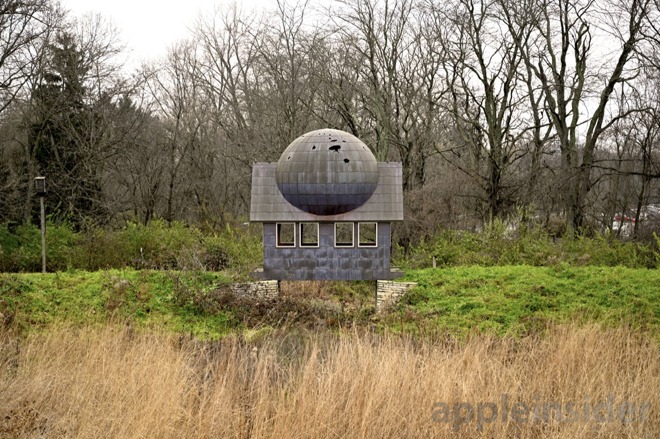

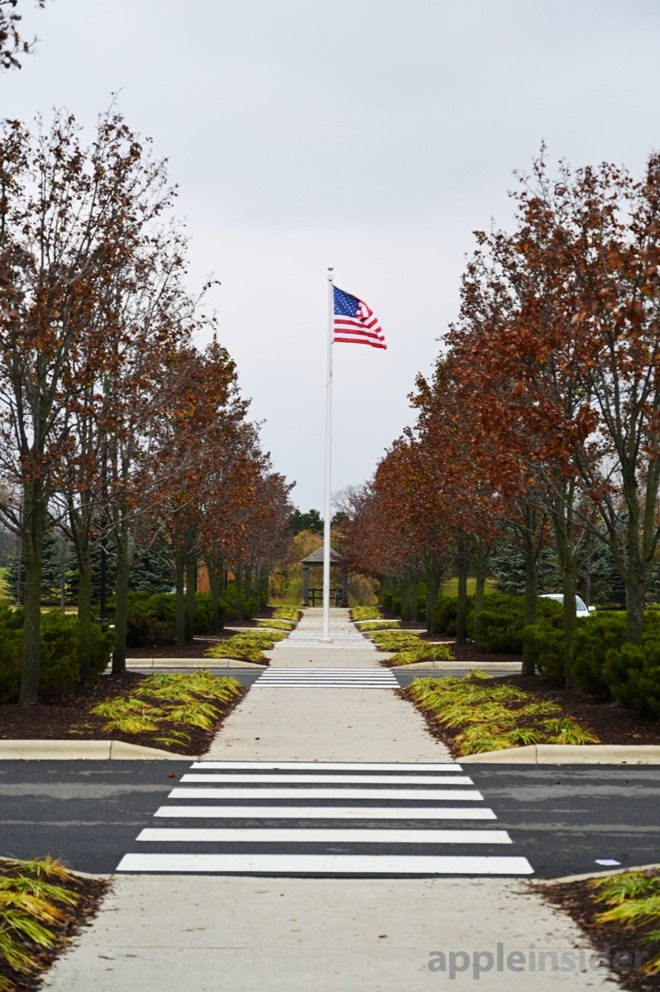
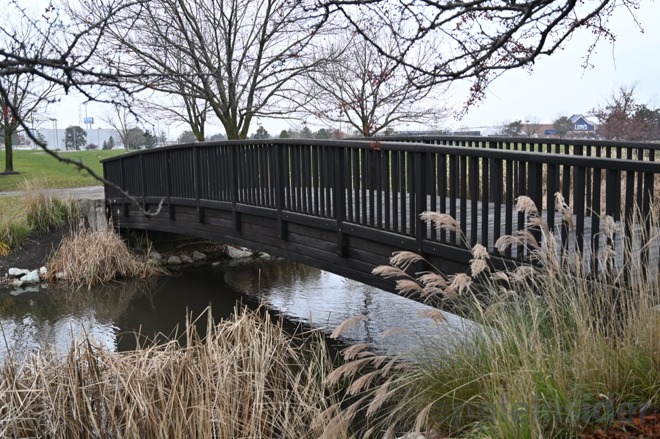

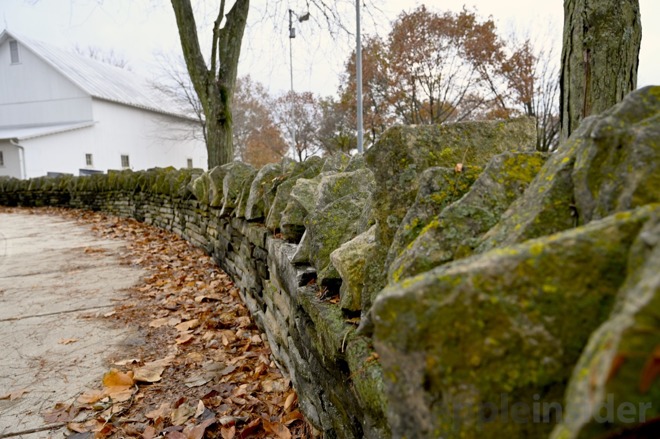
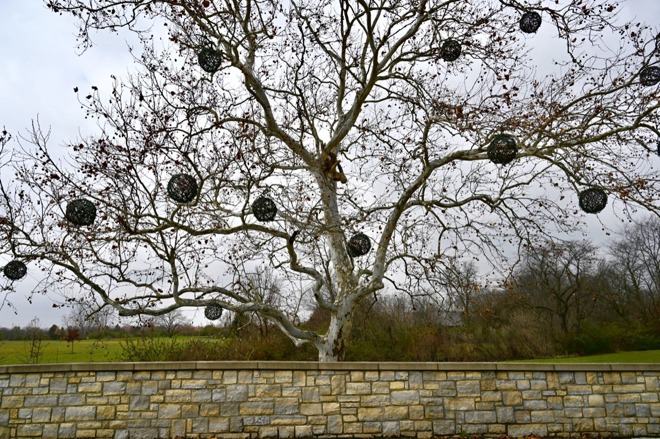


Comments
I got a chance to use one of the new Canon mirrorless bodies at a client site the other day and was super impressed at how well the EVF kept up with my movements.
I love USB-C with in-body charging. Very travel-friendly. And even wallet-friendly in the studio since it doesn’t require a proprietary mains power adapter for day-long tethered shooting. I do still life studio photography fairly often and I’ve always wished the wiring & logistics could be simplified. It’s s nice change of pace to see Nikon keeping up with tech industry standards.
I’ve been doing a bit of Astrophotography this year and to increase my gear’s capability for this kind of imaging, I’d prefer light sensitivity to megapixels.
the new Nikon lenses for the new models are also disappointing. It’s odd, because nikon stated directly that they went to F1.8 rather than F1.4 so as to have state of the art IQ.
also comparing images from a FF camera to that of a smartphone is incongruous. No one is going to make that as a buying choice.
right now, the Z7 is getting most of the attention in reviews. Wait until more camera site reviews come out for this.
buy. Happy times for mirrorless.
I've been reluctant to get a full-featured DLSR b/c I really didn't know which brand/model is best suited to work with our Apple stuff, iPhones, iPads, ATV, etc. Also, (most importantly) which brand/model's interface is the most 'Apple-like!'
My limited experience is that for 'usability' the DSLR interfaces/software sucks compared to Apple's. They're usually clumsy and clunky...similar to cable box interfaces.
We bought an inexpensive one a few years ago and sold it within 2 months. It did not have a view finder which made very difficult in sunlight to use. And it did not have wifi to connect to our iPad. I did buy her the wifi SD card which helped, I think.
Anyway, thanks again, Andrew. great work! Your videos, reviews, tips and podcasts have made Ai my one-stop place for all things Apple! Used to be MacWorld magazine. Sadly, that, as you know, is defunct.